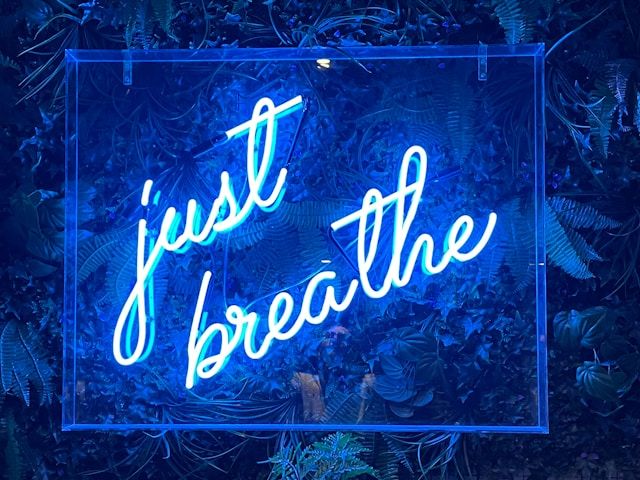.svg)


It is Monday morning. Your inbox is already overflowing, the first meeting starts in six minutes, and the muscles between your shoulders feel like piano-wire. Before you reach for a double espresso, consider the simplest performance enhancer available: one good breath.
Breathing is the only vital function you can steer manually. Slow, diaphragmatic breaths tug on the vagus nerve, shifting the body out of fight-or-flight and into “rest and digest” mode. Recent studies show that paced breathing at around six breaths per minute reliably boosts vagally mediated heart-rate variability (HRV), a marker of resilience and cardiovascular health. Higher HRV predicts better stress management, emotional control, and even lower mortality risk.
Most office workers sit for seven or more hours each day, shoulders rounded and laptops pulled forward. This posture squashes the diaphragm and encourages shallow chest breathing. Add long periods of mouth breathing (especially during rushed conversations or workouts) and you have a recipe for fatigue, brain fog, and frequent throat infections. Nasal breathing, by contrast, humidifies and filters air, produces nitric oxide (a natural vasodilator), and delivers up to 20% more oxygen to working tissues.
Journalist James Nestor chronicles these lost habits in his bestseller Breath. His self-inflicted experiment in which he blocked his nose for ten days sent his blood pressure, snoring, and anxiety soaring. The book is a page-turner and a science primer in one; if today’s article whets your appetite, Breath is the logical next stop.
Clinical trials in healthcare staff, students, and corporate employees show that just five to ten minutes of diaphragmatic breathing can lower resting blood pressure, cortisol, and perceived stress within weeks. That is good news for the concentration needed to finish those 3 p.m. budget spreadsheets.
Belly check-in (≈ 60 s)
Box breathing 4-4-4-4 (≈ 64 s)
Email-exhale rule (≈ 2 s each)
Or simply, s l o w d o w n to six breaths per minute.
Six complete inhale–exhale cycles in sixty seconds equals ten seconds per breath. This relaxed cadence creates a mild rise in carbon dioxide that stimulates the vagus nerve and delivers the strongest boost to heart-rate variability.
Some researchers call workplace breathing exercises “a low-cost therapy hiding in plain sight”. Blood-pressure reductions rival some first-line drugs, yet the technique is free, equipment free, and side-effect free.
Take a breath….
…
…and out.
Your body and your brain will thank you for it.